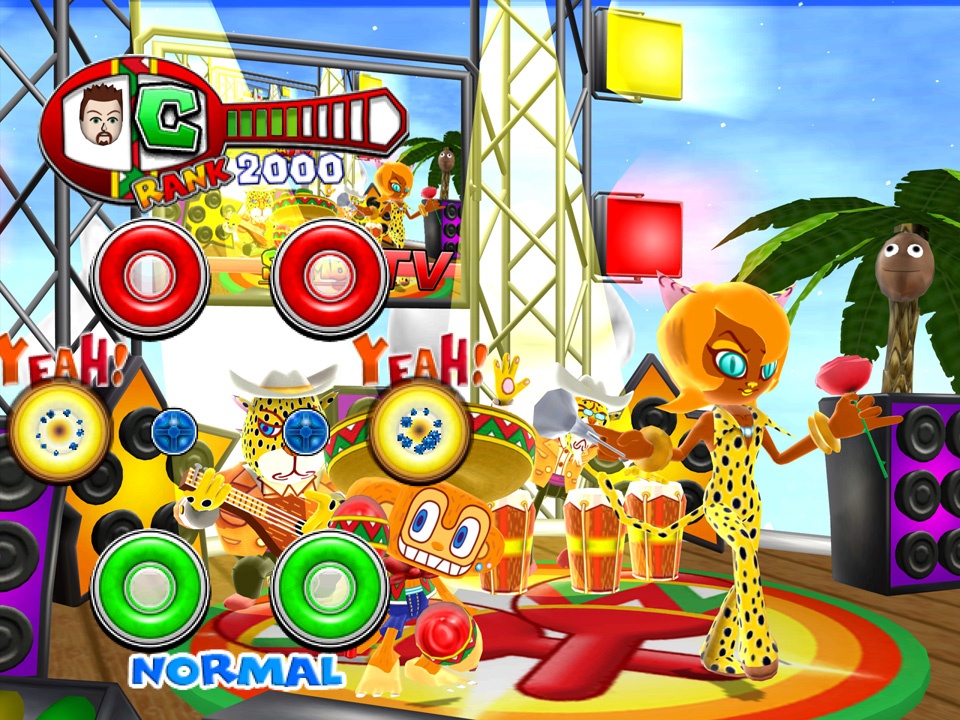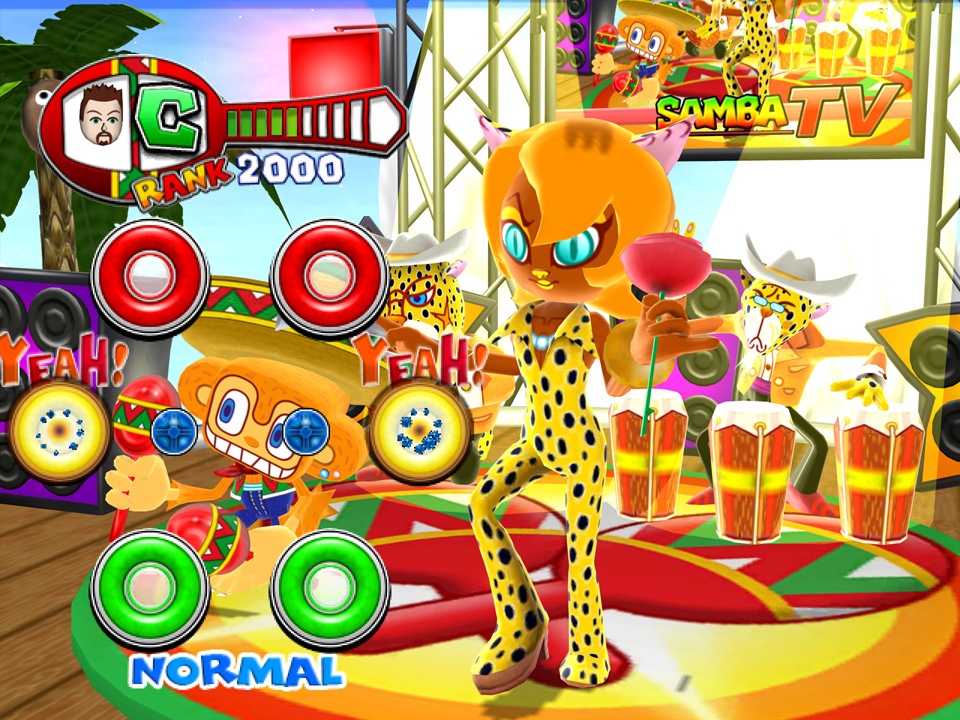Samba de Amigo Updated Hands-On - Multiplayer Modes on the Wii
We shake our groove things with Sega's Wii-powered rhythm game.
Before the days when rhythm games were commonplace in the US, Sega took a "Rock Band"-style chance and released Samba de Amigo for the Dreamcast back in 2000. The game was a home conversion of a popular arcade game that starred Amigo, a sombrero-wearing, maraca-shaking monkey. Back in the day, the release was seen as a bold move due to the fact the game came bundled with maracas controllers, a sensor bar, and decorative mat for roughly $100. The ensuing years have seen all sorts of changes to consoles and to the game market, all of which have paved the way for Sega to revive the rhythm game on the Wii with developer Gearbox Software handling the conversion to Nintendo's platform. We've periodically seen the game for a while at various press events, but we recently got our hands on a near-final version of the game and were able to put it through its paces.
If you've never played the original game, you shouldn't feel intimidated. While there is some history to the game, it's not exactly as complicated as the Metal Gear series. A new opening cinematic sequence shows Amigo with his eccentric friends posing and dancing in surreal manner, which just about sums up the game. Basically you're a monkey with a near-insatiable urge to get your groove on. And you do, repeatedly. The core of the game is you grabbing ahold of a controller and shaking your little heart out in time to onscreen prompts that require you to shake, pose, or wave your virtual maraca. We say virtual maraca because, sadly, there is no maraca peripheral or official maraca sleeve for the game, although there is at least one third party attempting to make a sleeve.

As with its Dreamcast predecessor before it, Samba de Amigo for the Wii gets a whole lot of mileage out of this simple mechanic. You'll find three main game modes--Career, single-player, and multiplayer--as well as a training mode. The Career mode is series of sequential challenges that you unlock in order. As you go, you'll unlock 48 pieces of content that includes sound effects, music, and stages. The single-player game is a straightforward run through various songs played on various stages. The multiplayer mode features five game options: Quickplay, Love Love, Battle, Minigames, and Classic (which is basically similar to the original game). Quickplay is just that; you and a friend dive into a song. Love Love is a two-player mode that determines your compatibility with a second player based on how in synch you both play. Battle mode has you creating a bomb through successful play that, once full, gets lobbed at your opponent and drains his or her life bar. Minigames is a collection of seven games, some of which you unlock, that run the gamut from traditional gameplay to longer stretches of the maraca theme. Guacamole is a whack-a-mole-style game. Power Rush is a fast-paced maraca-shaking fest. Monkey See, Monkey Do, is a "Simon says" style game that requires you to repeat sequences. Strike a Pose challenges you and a friend to match onscreen pose prompts. Pinata has you and a friend bashing a pinata open. Dance Dance Amigo tasks you with matching a frenzied pace of action. Volleyball is a somewhat awkward game that has you lobbing and hitting balls over a net. Besides the game modes, you'll find a training mode, a records viewer, and a Nintendo Wi-Fi Connection option that lets you download content. The game will also let you upload your scores if you choose a personal Mii to represent you in the game.
The fun factor of all the various modes and minigames hinges on the game's control. The work-in-progress game we tried has been improved since the last time we tried it. Gearbox has made some smart choices with the control scheme. You can choose to use the standard Wii Remote and Nunchuk setup or two remotes for your simulated maraca action. The training mode does a fine job of walking you through how the game controls. The biggest learning curve, which is true of many Wii games, is that you need to be pretty precise with your hand motions. The game isn't very forgiving of manic waving, which newcomers to Samba are likely to do.
The visuals in the game are on par with the Dreamcast game, which had a unique goofy charm that still holds firm on the Wii. Amigo and company are a cartoony bunch that sport a whole lot of personality. The stages are bouncy complements to the characters that groove along to the tunes in the game. There hasn't been any radical upgrading to the original game's look, although you'll now spot Miis in the crowd and play on some new stages not found in the earlier games.

Samba's audio is also on par with the original game and benefits from more tracks. You'll hear just about all the songs you'd want to from the original games along with more modern tracks from current artists, such as Rhianna. The additional sound effects and the like that can be unlocked help add to the goofy atmosphere as well.
Based on the version we played, Samba is looking like it's making a solid enough leap to the Wii. We're still not totally sold on the controls, but if you never played the original, odds are that you'll be fine with them. However, anyone hankering for the good feelings found from waving around maracas may be left wanting. From a content standpoint, the game's certainly got variety going for it.
Got a news tip or want to contact us directly? Email news@gamespot.com
Join the conversation